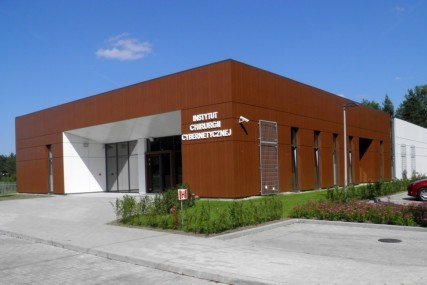Contents
Prostate cancer is included in the infamous statistics as the most frequently diagnosed in men in Poland. This cancer is diagnosed every year in approx. 15 thousand. patients in our country, and the mortality rate fluctuates around 50%. This is undoubtedly a cause for concern. Fortunately, awareness of the prophylaxis of the early detection and treatment of prostate cancer is growing, and in Poland there are technologically advanced methods available that not only effectively treat the disease, but also give hope for a more comfortable and longer life.
Prostate cancer diagnosis
Doctors emphasize that in addition to a healthy lifestyle and daily physical activity, it is necessary to regularly perform prostate examinations, especially after the age of 50 (or from the age of 45, if there is a family history of prostate cancer). The good news is that awareness of regular preventive examinations is more and more common in Poland. This is important because finding prostate cancer at an early stage gives you a good chance of a full recovery.
However, many men still treat prostate problems as a taboo subject. The gentlemen feel embarrassed to talk about their fears and are reluctant to visit doctors. And the first stimulus for preventive examinations should not be pain or erectile dysfunction.
It is worth remembering that this type of cancer initially does not give any specific symptoms, and therefore can develop unnoticed for many years. The reason why the patient is referred to the urologist’s office is usually due to an incorrect prostate specific antigen (PSA) result in the blood (greater than 4 ng / ml). Therefore, this type of test should be done first.
The disturbing result is, in turn, an indication for more detailed tests, including a transperineal fusion biopsy. It combines the advantages of ultrasonography (USG) and multi-parameter magnetic resonance imaging (mpMRI). Before performing them, the radiologist very precisely determines the area of the prostate gland that suspects the growth of pathological tissue. The ultrasound image is then superimposed on the MRI image.
Thanks to such accuracy, the urologist gains the ability to collect a specific section of biological material, which (after fixation and staining) is subjected to careful observation under a microscope. Compared to older biopsy methods, the fusion method gives greater reliability of the results, which reduces the risk of re-sampling for analysis.
Such modern diagnostics is a major milestone not only for patients, but also for doctors who have gained a more precise tool to help quickly implement appropriate treatment.
New methods – a chance for patients for a long life
Hope for all patients with prostate cancer is the innovative method of surgery performed with the assistance of the da Vinci robot. However, the treatment must be carried out by properly trained specialists. The technology is used not only in urology, but also in other branches of medicine, including gynecology, cardiosurgery and general surgery.
The da Vinci robot was developed at the end of the 90s, and is currently available in a few facilities in Poland, including the Medicover hospital. Such advanced technology enables a very precise operation, which in turn translates into minimizing the patient’s pain after the procedure and significantly shortening the period of his convalescence.
What are the greatest advantages of the da Vinci robot-assisted treatments? Doctors who use it emphasize that in the case of radical prostatectomy (i.e. complete removal of the prostate gland) it is very important not only to get rid of the diseased tissue, but also to provide the patient with a good quality of life immediately after the surgery. The high precision (up to 20x magnification, miniaturized tools up to 5 mm) of the da Vinci robot significantly reduces the incidence of side effects that are common in prostatectomy, such as urinary incontinence and erection problems. Thanks to this, the patient after the procedure has a chance for a comfortable and longer life.
Paweł Salwa, MD, PhD, head of the Urology Department at Medicover Hospital with many years of experience in this type of surgery, is convincing about the advantages of the operations performed with the assistance of the da Vinci robot:
The most important conclusion and observation is an absolutely groundbreaking increase in patient satisfaction with the effectiveness and safety of our treatment. On the one hand, the point is that the tumor has been completely removed and the patient has healed, on the other hand, that his everyday life has not changed at all – he is urinating and having good sex. Third, it is done safely, complications are rare and the patient recovers very quickly.
When is access to effective treatment better?
In Poland, the da Vinci technology is still in its infancy, and only a few hospitals in the country have access to the system. This is not the only problem. The success of the operation depends on the operator, i.e. a person who is obliged to undergo special training under the supervision of an experienced mentor. Currently, it is believed that the master level in operations assisted by the da Vinci robot is gained after performing a minimum of 500 procedures. No wonder then that it is a big challenge for the medical staff and the assistant team. Nevertheless, in terms of the number of doctors performing prostatectomy with da Vinci, Medicover Hospital ranks high among the world’s leaders.
More information on the operation with the assistance of the da Vinci robot can be found at https://urologia.medicover.pl/.










